Bob Dalsemer, recipient of the 2011 CDSS Lifetime Contribution Award, specializes in calling traditional American contra, square, and circle dances. He has composed a number of new dances in traditional style and published two collections of square dances (Smoke on the Water and When the Work’s All Done), and the book/recording West Virginia Square Dances (available for free in our online Library), about old time square dancing in several West Virginia communities. Raised in Baltimore, he cofounded the Baltimore Folk Music Society and helped start the dance program for the Folklore Society of Greater Washington.
Bob has been an integral part of CDSS for many years: a member of the National Council in the 1980s, vice president (1988–1990), and president (1990–1996), and has been on staff or served as program director for a number of our summer programs. He became Coordinator of Music and Dance Programs at the John C. Campbell Folk School, and moved to Brasstown, North Carolina in 1991.
For photos of Bob’s award ceremony held in December 2011 in Brasstown, NC, see the album posted by Keather Weidman.
Interview by Brad Foster
Interview by phone on November 13 and 28, 2011, by Brad Foster, CDSS Executive and Artistic Director Emeritus [with additional notes by Brad].
BRAD: When and where did you first start dancing or playing music?
BOB: Well, I started playing music when I was fourteen. I went to a summer camp where there was a counselor who played guitar and got a bunch of us interested in singing. We learned a lot of songs, took a canoe trip, and sang all the way down the river. When we got back we wrote a little musical show using tunes from a lot of the songs we’d learned. I got interested in that, bought some records, and my parents gave me some records by The Weavers for Christmas. I decided I wanted to learn to play guitar, and took a few lessons, but I didn’t really like it so I continued on my own. When I got to high school I got a banjo, and started to teach myself with Pete Seeger’s book [How to Play Five String Banjo]. From the banjo, I got interested in bluegrass. I played in a bluegrass and jug band through at least three years of college.
I didn’t really get into dancing until I came back to Baltimore after college. I met some folks who worked for the American Friends Service Committee who had been to Berea [the Christmas Country Dance School at Berea College in Kentucky], and they got me interested and took me down to Berea in 1969. While I was there I met some people from the Baltimore/Washington area who had a very small dance group in Baltimore. That was Mary Harrell and John Owen, and I joined their group. The Hardings [Barbara and Mart Harding] were in that group, also Joe and Gwynne Blundon. When Mary left town, I decided to keep the group going on my own.
That first time I was at Berea, in 1969, I met a number of people. [Future CDSS director] Jim Morrison was my roommate. We were standing next to each other when they were handing out the roommate assignments, he had a fiddle and I had a banjo, so we said “Hey, do you want to room together” and said “Okay.” Gene Murrow was there. I think I met John Wheeler around that time, and some other folks.
John [Owen] and Mary [Harrell] also took me to Pinewoods the first time, probably in 1970. Then things really got started! I met Marshall [Barron] and Phil [Merrill] and had a great time. Marguerite and Otto Wood [who played for the John C. Campbell Folk School for many years] were also on staff.
I got very involved pretty quickly. I guess I was 26 in 1969. I started calling in 1971 or 1972. When Mary left town, I found a church hall that was near where I lived in downtown Baltimore and we started a group there. When we first started up, John Owen taught a session of morris before the main dance. Shortly after we started John’s work forced him to move away. We had that hall for a couple of years. We were dancing two Wednesday nights a month. It got popular enough that at one point I found a second hall, and we were having dances every Wednesday night, but in different locations. I think about 1975 I found the Lovely Lane Church hall, where they are still dancing today.
About that time too I was running a series of monthly folk concerts in Baltimore with a friend of mine named Michael Quitt. The series was called “Sweeney Todd Presents.” We had been bemoaning the fact that all the coffee houses in Baltimore had gone out of business, and there wasn’t any folk music. In 1975 we decided it was getting to be too much work for just the two of us, so we got a group of friends together and founded the Baltimore Folk Music Society.
BRAD: Didn’t you work for CDSS at some point?
BOB: I did, just a few months. Jim [Morrison] and I got to be pretty good friends. He was working for CDSS in New York. This would have been in 1971. He got me a job as an office assistant. I went up in the late spring, worked through end of summer, and I was at Pinewoods for a few weeks. The CDSS office was on Christopher Street. Jim and I had an apartment close to Eighth Avenue.
BRAD: What was [longtime CDSS director] May Gadd like? What was it like working for her?
BOB: She was great; she was a character, and she had her little peculiarities. She didn’t always like what Jim and I were doing, but most of the time she let us do it. The big thing that I remember was–we organized a dance with Dudley Laufman. We made a publicity flyer for it, and put it all over the place in New York. I don’t think she was happy about spending the money to publicize it, but she did let us do it. She had her particular vision and we had to work around her a bit. She was always complaining to me because Jim liked to sleep late, and never quite got into the office on time. She used to complain to me about that, and I told her that there wasn’t anything I could do about it. I grew to really love her a lot. I thought she was a remarkable teacher. It was very difficult to watch her get to a point where she really couldn’t teach any more [late in her life]. I remember spending a couple of summers at Pinewoods where it was heartrending to see that she couldn’t remember things anymore. I was really sad when she died. I owe her a lot, as I do you.
BRAD: I think I first met you at Pinewoods, and you were calling and playing accordion. When did you start playing accordion?
BOB: I started playing accordion right after my first time at Berea, in 1969. I’d taken the beginning English country dance class with Bicky McLain. Her son, Bun McClain, the middle Raymond and the dad of the McLain Family Band, played accordion for that class. I suddenly realized, whoa, there is an instrument you can have at a dance and be the whole band. You’ve got everything you need: you’ve got bass, you’ve got melody, and you can carry it around. I talked to Bun a lot that week. The family band had just started, and they were playing a lot of bluegrass, which is something I’d been involved in. We’d get together and play music. [Bun’s son] young Raymond was still in high school, I guess Alice [White] was maybe 15 or 16, Ruthie [McLain Smith] was probably 12 or 13. I don’t know what their age differences are, but they were pretty young. They were very impressive even then. I asked Bun to show me how the accordion worked. When I got back to Baltimore. I took some lessons from a Mr. Tedesco who had an accordion studio. I took about a month’s worth of lessons from him mostly to figure out how the bass section worked and I bought an old Excelsior accordion from him. When I went up to New York and lived with Jim, that was probably most of what I was doing, working on the accordion, trying to figure out how to play the thing.
BRAD: When did you start playing fiddle?
BOB: I started fiddle a little before accordion but I didn’t get into fiddling very seriously until I moved to West Virginia for a year in 1978-79. I had a lot of time to myself, and hung out with a great fiddler named Woody Simmons. It was a severe winter. I was supposed to be doing school programs, but schools were closed a lot. I’d stay home and play the fiddle.
BRAD: Was this when you did your fieldwork collecting dances?
BOB: I was hired by the Randolph County Arts Council to be artist in residence in West Virginia that year. I helped to organize dancing in Elkins, and I did both music and dance programs in probably every school in Randolph County at one time or another. I had a weekly program for the Sheltered Workshop for mentally handicapped folks. And while I was there that year I made it my business to go and visit old time square dances in West Virginia. That is when I started writing my book [West Virginia Squares, published by CDSS]. As you can see I had way too much free time that year. I visited a lot of traditional musicians in Randolph County. I wrote a little article for CDSS about Currence and Minnie Hammons who were ballad singers in Randolph County [in Country Dance and Song, volume 10, 1979, pp. 30-38].
BRAD: Were the Augusta Heritage camps there then, or did they come later?
BOB: They were, but they were not run by the college [Davis & Elkins College] yet. It was still under the auspices of the Randolph County Arts Council. The summer following the year I was there I was on staff at Augusta. And then I ran the dance week for them the first year it [was run by] the college, in 1979 or 1980.
BRAD: Do you remember when you were first on staff with CDSS?
BOB: According to my list, I was on staff in 1976 for the first time. Jim Morrison hired me to be the American caller for one of the two Dance Weeks. In the afternoon, they would have two sessions of American dancing. One would be at the same time as rapper sword, and the other would be opposite longsword. I called mostly squares from Maryland Line [a small rural town between Baltimore and York, Pennsylvania]. All the young folks at Pinewoods thought it was great, but some of the older folks didn’t like it at all. I won’t mention names, but I remember one older Pinewoods attendee of many years said to me “Oh, those stupid simple squares, we used to do those years ago.”
I was co-chair [Program Director] for Family Week with Meg Lippert [then Durham] in 1978. Looking at my list, I was on staff at Pinewoods [in] 1976-1980, and then 1982-87, 1990, 1993-95, and then 2000 and I think that was the last time. So I was on staff during the ’80s almost every year except for one or two.
BRAD: And you ran American Week for a while.
BOB: I know I ran English & American Week a couple of times, but I may have run American Week too. [CDSS records show Bob first ran American Dance Week in 1984.]
Brad. In 1978-79 you were doing the Arts Council work and that lead to the publication of West Virginia Squares. Can you tell me more about that project?
BOB: I started out just going to dances the year that I was in residence there. I made recordings and wrote extensive notes, and when I got back to Baltimore I continued working on it. I don’t know how many drafts I did, all hunt and peck on a little portable typewriter. I ended up getting a little grant from NEA─not much, really, a few hundred bucks─so that I could go to a few more dances in West Virginia as part of that project. They paid for my transportation plus some blank tape. I shot a little bit of super-8 film at a dance in Independence, Pennsylvania, which is right on the West Virginia line.
BRAD: When did you come to CDSS with the project?
BOB: Jim encouraged me. After I showed him what I was doing, he passed it along and they agreed to publish it. Jim and Bertha Hatvary [then CDSS director] were the editors.
BRAD: The finished product arrived in 1983, in February or March, soon after I started working for CDSS. I was very impressed with the material you had there, and very pleased to have that out. Later on you published New England Quadrilles─is that right?
BOB: I did a little booklet that I put together. I think CDSS carried it for a while. The idea was to show contra dance callers how to call New England style squares.
BRAD: I’m going over the publication history I can remember. Sometime later you did your paired “Smoke on the Water” and “When the Works All Done This Fall.”
BOB: That was in the ’80s, and another example of having too much time on my hands. I don’t remember exactly the years. That was a lot of fun, really. Especially with the musicians who I got to do it. We ended up recording it in the Boston area because Peter [Barnes] knew a guy who was a good recording engineer up there. Peter and Bill [Tomczak] were both there. Steve [Hickman] and I went up there, and we got together and did it. I don’t think we spent more than two days in the recording studio, knocking those things out. It was really a lot of fun. You can still get everything on Do-Sa-Do.com. You can get individual dances with or without calls in mp3 format and the book is in pdf format. It’s a Western square dance site.
BRAD: I love those books; they had a big impact on me. Did you do any other publications? Those are the ones I can remember.
BOB: We did one here at the Folk School, which is unfortunately out of print, a project called Folk Dance Fun for Schools and Families. Nanette Davidson, Marsha Owen, and myself started with the third grade at Martins Creek School. We worked with them when they were in the third, fourth, and fifth grades. Martins Creek is the little elementary school that is closest to Brasstown. That’s where [the dance] “Sasha” came from.
BRAD: Did you introduce “Sasha” to us?
BOB: We were introduced to it at the Folk School by one of our Danish hosts, Hanne Jørgensen, who learned it at her folk school in Denmark. She taught it to us, and in turn I taught it to a whole bunch of people. Steve Hickman probably spread it around as much as anybody. I asked Hanne to find out where her teacher had learned it, and we learned it had come from a book by a Danish folk dance teacher named Klaus Jørgensen [no relation to Hanne], and it turned out I knew Klaus Jørgensen, I’d met him on my first trip to Denmark. At that time he’d given me several folk dance books he’d written, but not the one that had “Sasha.” After we’d traced it back to one of his books, I wrote to him and he wrote back giving me more background about where he had learned it.
BRAD: I have a vague memory that before you left [Baltimore] you started a callers collective or a callers group.
BOB: Yes, we did that. A group of callers in the Baltimore, Washington, Northern Virginia, Annapolis area, and we started getting together monthly I think, discussing things, calling dances for each other. I think it may still continue to this day. I know a number of the callers in that area, particularly Ann Fallon from Annapolis, and Susan Taylor in Baltimore; I think Robbin Marcus who is now in Atlanta was involved in it. I think some of the gals who are doing the square dance in the DC area now─four or five women callers─may have been involved. I think we started just before I left for here [North Carolina], so it was probably around 1990. I moved here in 1991.
BRAD: When you started [at the Folk School], I felt like you were rebuilding it all.
BOB: Yes, we definitely were. I think when I started we were running about fifteen music classes a year. Now I’m running some fifty music classes a year. Maybe eight or so dance classes a year, of which Winter Dance Week is really the only weeklong one. We have a Dance Musicians Week and I have my Callers’ Week. Everything else is just weekends.
BRAD: You were President of CDSS, 1990-1996, and on the National Council before that?
BOB: Yes, that’s right. I was Vice President a number of years before I became President, under Genny [Shimer, who was President from 1984-1990]. And before you came on board [in 1983] and we reorganized everything, I was on the Executive Committee.
BRAD: Any memorable things, memories you have of those days, being on the Exec or being on the board?
BOB: There was a fair amount of tension, generational tension, between older and younger folks, and between people who wanted more American dance and people who really didn’t care for it. Certainly the most difficult [years were] the transition between May Gadd [National Director until 1974] and you [Brad became National Director in 1983]. I didn’t experience much of that because I wasn’t on the Exec much in those days. I definitely remember when we discovered that you were interested in being director. That was very exciting. I can remember several of us who were very much in favor of that, and other folks who weren’t so sure. I can remember that very clearly, that kind of tension. And of course there was the question of moving out of New York [City], both before and after you became director. Jim [Morrison] kind of pressed for that too, but it didn’t go anywhere.
BRAD: I remember talking to some people who adamantly rejected the idea of moving. I valued and respected them, and didn’t want to hurt them, and thought maybe I should resign and let things be as they were. Then I talked to you, and to Genny [Shimer], and both of you said you thought the move was a good idea. That encouraged me to stay, to wait and see what happened.
BOB: I felt the move had to happen, because I felt things in New York were just way too entrenched. We needed the break. And I think we’ve all been proven right, and that it was the best thing we did. I think CDSS has a lot to be thankful to you for. Getting us out of New York was certainly a big one.
BRAD: It was a different era, looking back at it for me. CDSS has changed so much since then.
BOB: So much, yeah. It is totally different. And it probably will be different in the future. It will probably be good, I mean, change is good.
BRAD: I know you toured [as a caller]. I know you went to Denmark. But I don’t know much about your touring. Are there any highlights of your touring either in the U.S. or outside?
BOB: Gosh, I think some of the most exciting dances for me have been ones that were actually largely for non-dancers. I can remember once I was invited to call a square dance in Washington, DC. I think it was when they had just finished L’Enfant Plaza, and they were having a big street celebration on a Saturday. I went over with Bob Paisley’s bluegrass band, Southern Grass. We had this huge square dance with a couple hundred people of all ages, half of them black, just the people that were out there. And having it all work, you know, and just having all of those people having a great time and kicking up their heels. That is probably one of the most memorable dances I can remember.
I guess another one was calling a square dance for Maryland Bar Association Convention, of all things, with another bluegrass band, the Johnson Mountain Boys, and looking out on the floor and seeing the Comptroller, which is what they call the Treasurer of the State of Maryland, and two or three Maryland supreme court justices. All the lawyers out there whooping it up on the dance floor! Stuff like that, you know, I think I remember stuff like that more than calling at NEFFA, which is certainly an amazing experience too.
And I think CDSS actually got me this one gig I can remember doing. They had a series of dances outside Lincoln Center, in New York City, in the summer time with just whoever showed up. I did one of those with Chip Hendrickson, which was a great experience. I can remember the last dance we did. He got everybody in this huge Sicilian Circle, and he said “Let’s just trade off calling rounds of this.” Which we did, and we just improvised each round as we went along. I think we were on our way up to Pinewoods when I did that. It was probably the mid 1980s.
BRAD: Is there anything else you can think of, that would be interesting to add to this?
BOB: Well, I’ll tell you. One of the great, recent experiences was just a couple of weeks ago, the Dare to be Square weekend that we had here [at the Folk School]. That was amazing! I got an email from Tony Parkes today in which he said that one of the best things as far as he was concerned was getting to dance to all of these great callers. I’ve got to second that!
BRAD: I was jealous, I wanted to be there so much. It was an amazing gathering of people.
BOB: It was indeed. The great thing is that we got it documented [led by David Millstone, and with a grant from CDSS]. People will be able to see the dances. Seeing the dances is going to be interesting because there was probably a two to one ratio of women to men. Seventy-five to eighty percent of the people there were callers. It was pretty darn fun just having all those folks around. [100 videos from that weekend are available at Vidcaster and YouTube (the same material is on both sites), and on the Square Dance History Project, David’s bigger project, of which Bob is a consultant.]
BRAD: And back in the 1970s and ’80s, I would have said there were more men than women who called.
BOB: Yes, it was the reverse. Before Sandy Bradley, there were hardly any women callers, for American anyway. Most of the English callers were women I guess. Sandy’s inspiration really changed all that and now there are way more women than men.
I just want to say how much I appreciate all the opportunities you’ve given me over the years and everything you’ve done for CDSS. You have just an outstanding legacy, and gosh, if anyone deserves this award it’s certainly you.
BRAD: Thank you, Bob.
BOB: I think that should come up sometime, soon. Of course, you aren’t old enough yet!
 Sue is also active as a dance musician and teacher. She currently plays with two contra dance bands, Joyride and The Stage Crew, plus she collaborates with many other musicians for contra and English dances. She has led large contra dance bands in Ann Arbor, Michigan, and Coos Bay, Oregon, and was a teacher and musician in Halifax, Nova Scotia, for CDSS’s Centennial Tour. She has tutored piano numerous times at the American Festival of Fiddle Tunes, and she teaches every July for Contra Dance Musicians Week at John C. Campbell Folk School in Brasstown, North Carolina.
Sue is also active as a dance musician and teacher. She currently plays with two contra dance bands, Joyride and The Stage Crew, plus she collaborates with many other musicians for contra and English dances. She has led large contra dance bands in Ann Arbor, Michigan, and Coos Bay, Oregon, and was a teacher and musician in Halifax, Nova Scotia, for CDSS’s Centennial Tour. She has tutored piano numerous times at the American Festival of Fiddle Tunes, and she teaches every July for Contra Dance Musicians Week at John C. Campbell Folk School in Brasstown, North Carolina. 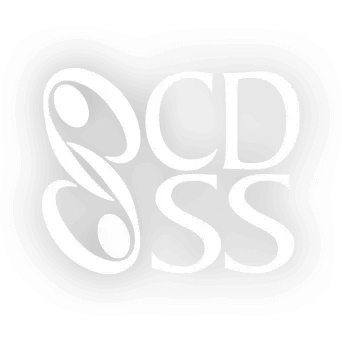
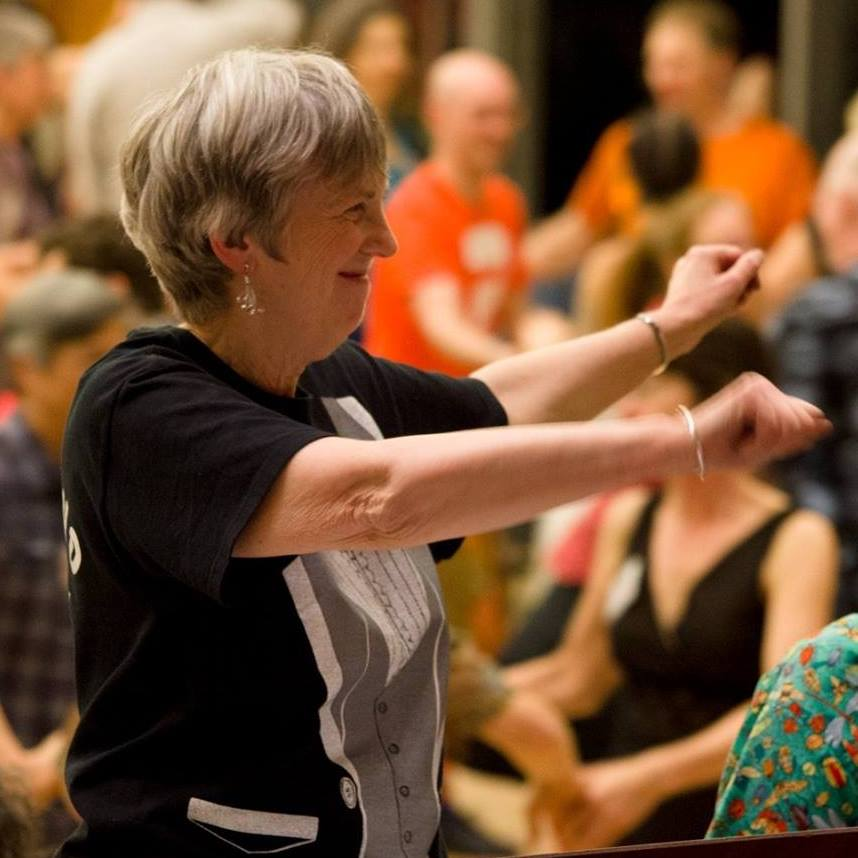

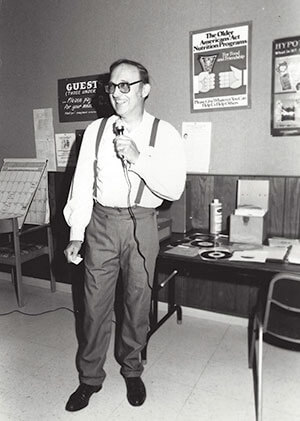 Attending Berea Christmas Dance School for the first time in 1948, Bill discovered new dance forms, including contra dance, English country dance, and Appalachian clogging, which he subsequently introduced to dance communities across Northeast Ohio and beyond. Bill returned to Berea Christmas Dance School multiple years on staff, teaching traditional squares, Appalachian clogging, beginning English, and dance leadership.
Attending Berea Christmas Dance School for the first time in 1948, Bill discovered new dance forms, including contra dance, English country dance, and Appalachian clogging, which he subsequently introduced to dance communities across Northeast Ohio and beyond. Bill returned to Berea Christmas Dance School multiple years on staff, teaching traditional squares, Appalachian clogging, beginning English, and dance leadership.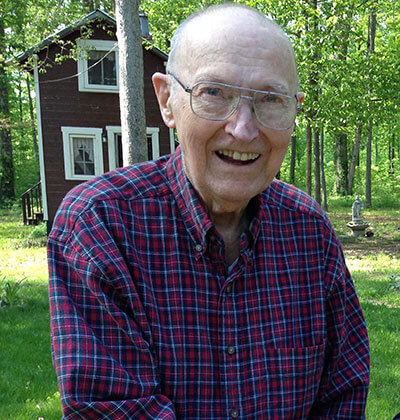 At home in Wooster, Ohio, Bill prepared a generation of youth for square dance and square dance calling competitions at the Ohio State Fair. He called contra dances starting in the 1950s, and his monthly old-time square dance ran continuously for 50 years. After 2000, Bill co-founded the intergenerational program at Terpsichore’s Holiday and performed “Minuet to Macarena,” a revue of couple dance 1800 to present, from the Wheatland Music Festival to the Atlanta Waltz Society.
At home in Wooster, Ohio, Bill prepared a generation of youth for square dance and square dance calling competitions at the Ohio State Fair. He called contra dances starting in the 1950s, and his monthly old-time square dance ran continuously for 50 years. After 2000, Bill co-founded the intergenerational program at Terpsichore’s Holiday and performed “Minuet to Macarena,” a revue of couple dance 1800 to present, from the Wheatland Music Festival to the Atlanta Waltz Society.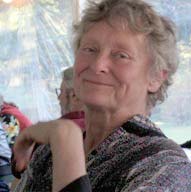
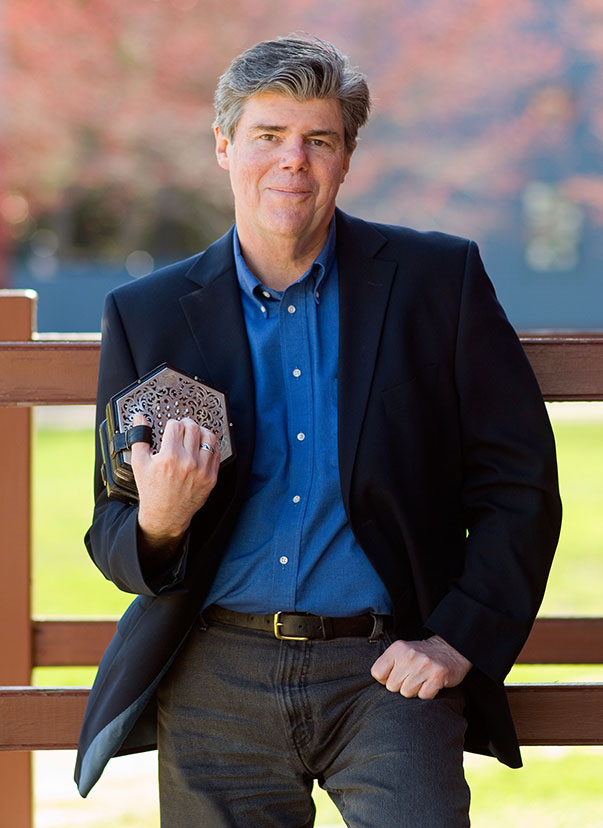
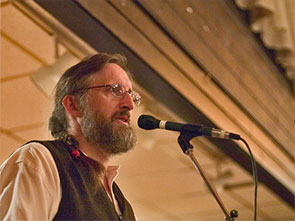
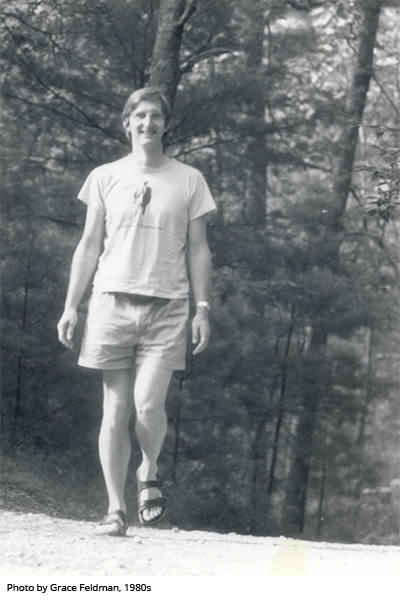 [/media-credit]
[/media-credit]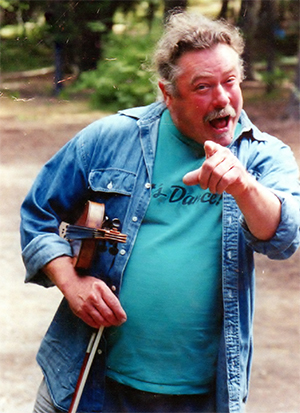
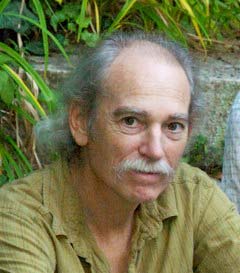
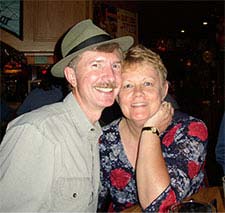
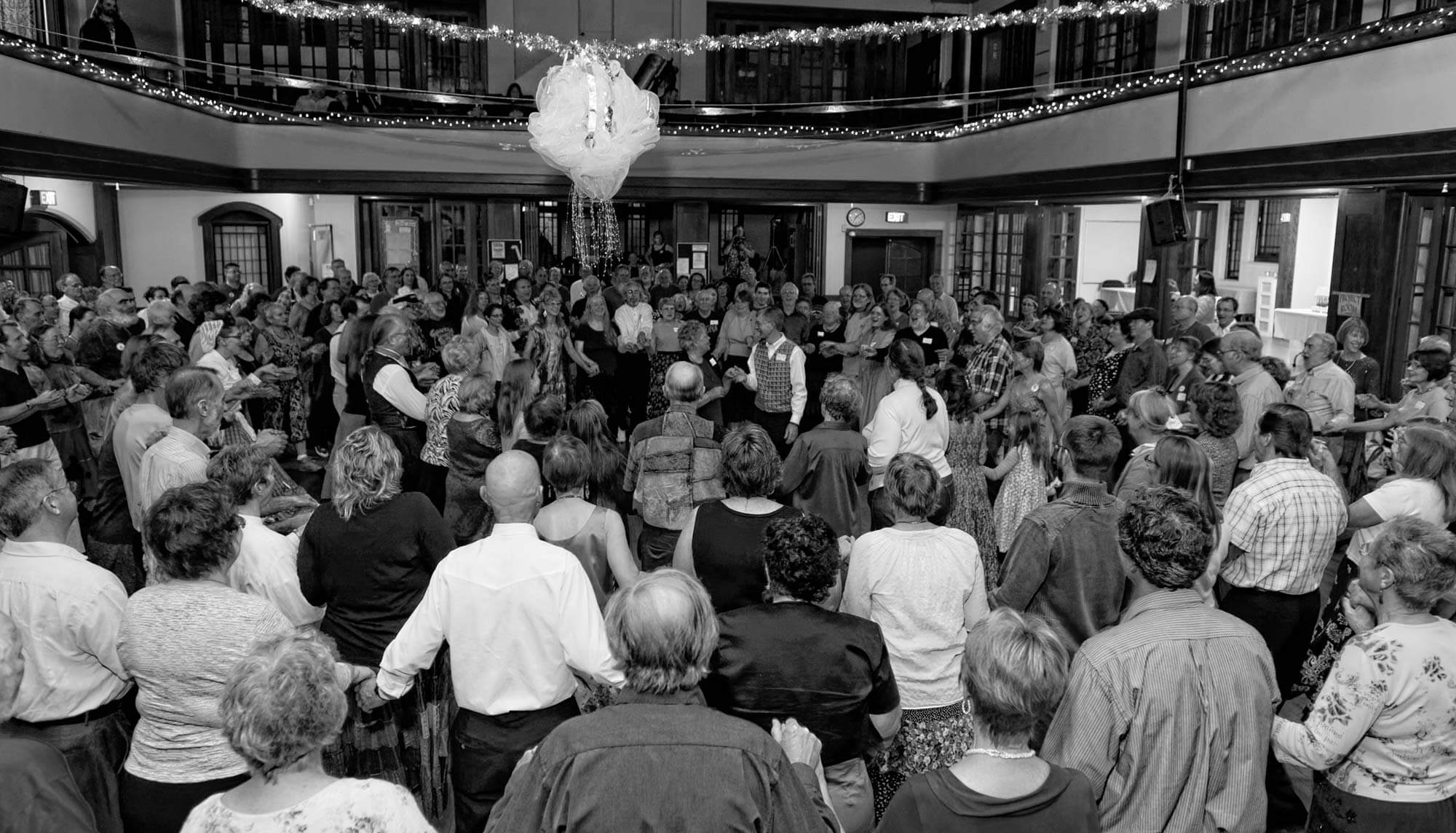


 Thanks to the Massachusetts Cultural Council for their generous support.
Thanks to the Massachusetts Cultural Council for their generous support.